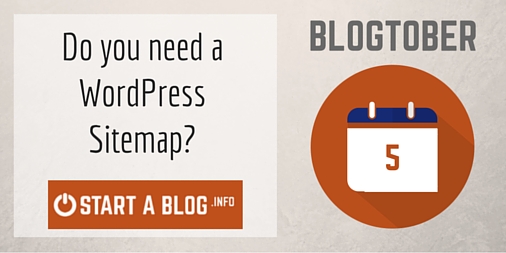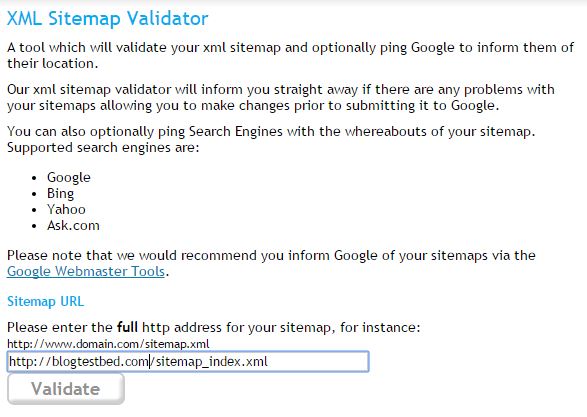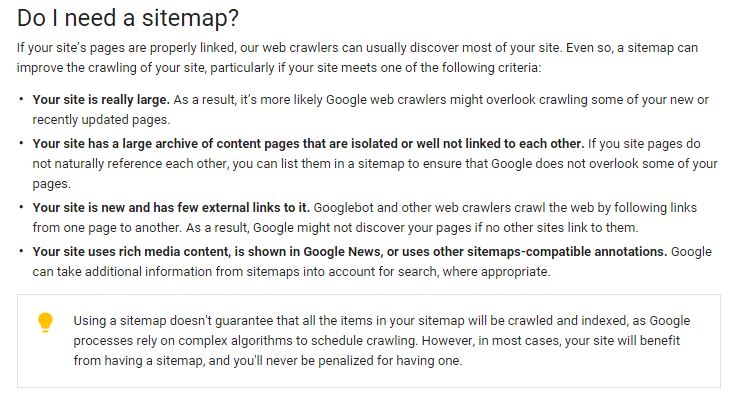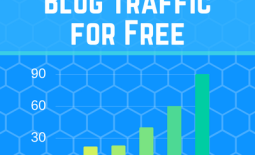Do you need a WordPress Sitemap?
 Are you wondering if you still need a sitemap for your blog or website?
Are you wondering if you still need a sitemap for your blog or website?
Although I do come to a conclusion towards the end of this blog it’s important to know a little more about sitemaps first.
Unfortunately, the answer is no longer black and white, so you’ll need to make your own mind up.
What is a WordPress Sitemap?
A WordPress sitemap is like a table of contents for your entire blog. However, a sitemap doesn’t just link to your blog content it also lets the Internet Robots know more about your content so they can index it in their search engines. One common Internet Robot is the Googlebot.
You see these Internet Robots are busy and can’t spend a lot of time on your blog because they have a billion other web pages to catalog so you can help them by creating a WordPress sitemap to let them know what’s recently changed and how frequently they need to come back to index more of your content.
For example, if you have a busy news site you’ll want them to come back every few hours to update their catalog, whereas a blogger posting once a week only needs them to come back weekly.
How to create a sitemap
A sitemap is easy to create in WordPress when you’ve created a self-hosted blog, because one of the essential plugins you’ll install first is Yoast SEO as this WordPress plugin covers all aspects of Search Engine Optimisation for your blog.
By default the sitemap feature is turned off but you simply need to go into your SEO -> XML Sitemaps section after installing Yoast SEO and click on save and a sitemap will be created for you. However, there are a few other things you’ll want to consider and it’s easier if I show you in the quick video below.
How to create a WordPress Sitemap
A Site Map Example
In the video I showed you a Site Map Example so here it is again for those that didn’t bother watching the video.
 As you can see it’s just a lot of links to your content and has a little more advanced information that’s only relevant to busy websites who post content hourly. If that’s not you then skip to the next section, otherwise I’ll explain a little more about how the Internet Robots interpret this data.
As you can see it’s just a lot of links to your content and has a little more advanced information that’s only relevant to busy websites who post content hourly. If that’s not you then skip to the next section, otherwise I’ll explain a little more about how the Internet Robots interpret this data.
URL: Obviously the URL for your blog post
Prio: How much priority you give this page. Remember the Googlebot has billions of pages to check, so if you’ve got an important page on your site map that changes regularly you’ll want to give it a higher priority so the Googlebot definitely knows to check there first.
Images: The number of images you have on that page.
Pro Tip: Try and ensure you have at least a few images on each page as Google will give your content a better ranking in search results.
Ch. Freq: How frequently this page changes and how long before you come back to index the page.
Last Mod: The last time the page was modified, which is also a signal on when the Internet Robot should take another look at this page.
Sitemap Checker
Once you’ve created a WordPress Sitemap you might want to ensure, it’s formatted correctly and the best way to do this is to submit it using Google Webmaster Tools as this is why you created a sitemap in the first place.
I’ll show you how to submit your WordPress Sitemap to Google in a later video.
But another option you have is to submit it to an online sitemap checker like XML Sitemap Validator
Just enter in your sitemap URL and then click validate. But as I’ve already mentioned you might as well submit it directly to Google as soon as you create it and they’ll tell you if there are any problems with your sitemap format.
Do I need a sitemap?
In the past I would have suggested yes, but times are changing and big search engines like Google are getting better at search and don’t need as much help from your sitemap anymore.
Within Google Support, they answer this question like this
Which suggests you’ll benefit from a sitemap but it’s not a requirement anymore.
What they don’t explain is a sitemap will help you to identify any shortcomings with your content, such as not including images within your posts and even give you some dates for old posts that you might like to revisit and improve.
They also neglect to recognise the existence of any other Search Engines out there and you’ll be surprised at how many smaller search engines exist and would still use your sitemap data.
So the choice is entirely yours, but I’d say it won’t hurt your search rankings and will only take a few minutes of your time, so why wouldn’t you?
I hope I’ve answered you question today and maybe you understand how a WordPress Sitemap can also help people to find you.
If you have any questions then please leave them in the comments below and please share and like my Facebook Page. Thank-you.






